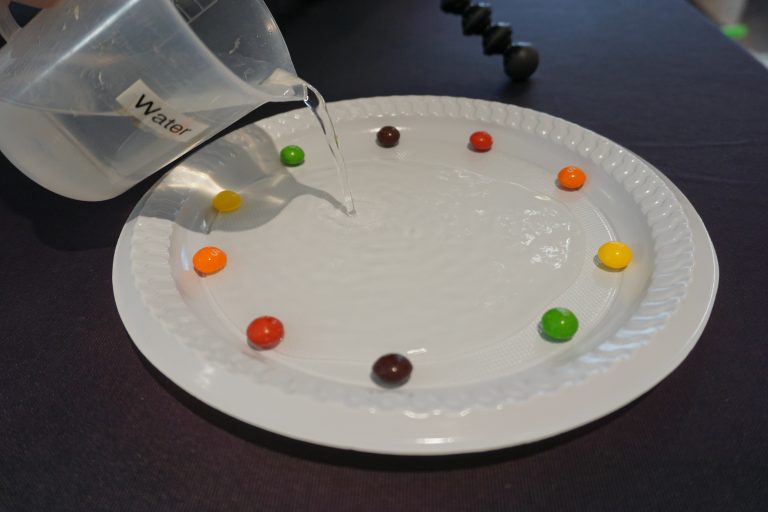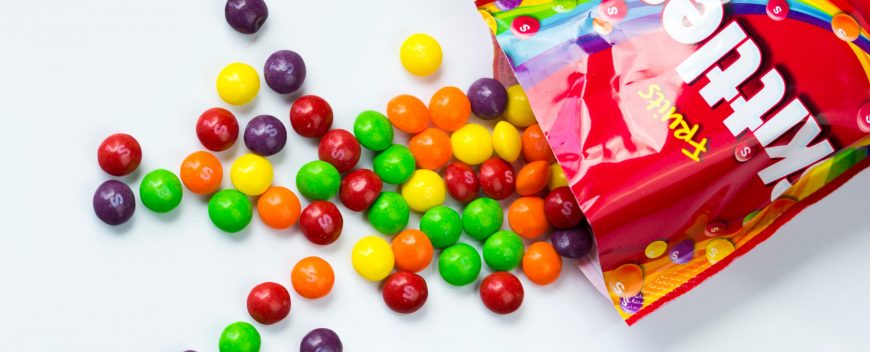Materials
- A packet of Skittles lollies
- A flat plate with a rim (white if possible)
- Tap water in a small cup or jug
- A sugar cube or 1 teaspoon plain white sugar

Instructions
Step One
Make a pattern of Skittles around the edge of the plate. Try not to let them touch, and space them as evenly as possible.

Step Two
Gently pour your water into the middle of the plate until all the Skittles are in the water, being careful not to disturb or move the Skittles.

Step Three
Watch what happens! (For best results, be careful not to bump the plate or the table).

Step Four
When the colours have reached the middle, carefully place a sugar cube (or a small pile of plain sugar) into the middle of the plate. What happens to the colours now?

What's happening?
Skittles are tasty little balls of sugar with a coloured sugar coating. When the water touches the Skittle, the sugar in the coating starts to dissolve, taking the colour with it.
When something dissolves, it might look like it’s disappearing, but what’s really happening is that the molecules are separating from each other and floating around in the water – the sugar is still there, even though we can’t see it.
Stirring helps all the sugar dissolve and spread quickly and evenly through the liquid – this is why you might stir a cup of tea or coffee after adding sugar.
But even if we don’t stir, the molecules of sugar spread themselves out evenly anyway. This is a process called diffusion.
In diffusion, dissolved molecules move from an area where there are lots of them, to areas where there aren’t as many, until they’re evenly spread.
When the sugary coatings of the Skittles first started to dissolve, all the sugar was around the edges of the plate. The colours dissolved along with the sugar, which let us see where the sugar molecules were going – they moved in towards the centre of the plate where there was no sugar.
When you add the sugar cube in the middle of the plate, once again the sugar starts to dissolve. But suddenly, there’s a lot more sugar in the middle of the plate than there is around the edges. So we can see that extra-sugary water in the middle starts to push back out towards the edges to even things up.
Check your understanding
- What happens to something like sugar when it dissolves? Does it disappear?
- Is dissolving an example of a physical change or a chemical change? Explain your answer.
- Why did we see the colours moving towards the middle of the plate?
- Why didn’t the colours mix together in the middle of the plate?
- Describe what happened when you added the sugar cube. Why did the water in the middle of the plate turn clear?
- Explain your understanding of these scientific terms: dissolve, diffusion, molecule



